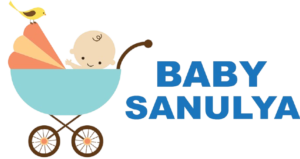Infants come into the world expecting and needing to be close to their trusted caregivers. If your baby or toddler wakes the minute you put them down in their bed for a nap, that’s exactly what nature intended to protect them. For most little ones, they feel safest in their parent’s arms.
That’s why many parents ‘contact nap’, whether they plan to or not. A contact nap is when their little one needs the warmth, comfort, and reassurance to be able to peacefully sleep, so parents or caregivers either hold them in their arms or lie close to them in bed.
While it’s biologically natural, normal, and healthy to contact nap, some parents love the snuggles and forced rest, while others find it demanding, frustrating, boring, and unproductive at some point.
If you’re one of the latter and have felt stressed because you’d prefer to use the time to do other things around the house, attend to the needs of other children, or have a rest yourself, you’re not alone.
However, we want to show you that contact naps can be a positive and enjoyable experience for both you and your little one. It just might mean looking at naptime a little differently and discovering a few practical tips on how you can still get other things done.
Nap time is an essential part of your child’s day. If your little one prefers to be close to you to meet their unique sleep needs, you may as well use it to your advantage and set yourself up for success, rather than resisting it.
The key is in the planning and preparation to ensure your comfort:
- Choose a dedicated cosy spot. Whether that’s an armchair or rocking chair with cushions to support your back, your bed, or a floor bed.
- Go to the toilet first!
- Have all of the necessary supplies in one spot by putting together a contact nap station or basket. Here is your checklist:
- Water bottle
- Phone
- Phone charger
- Tv remote control
- Snacks (such as our bliss balls)
- Earbuds
- Monitor to watch your other napping child
- Vitamins (it might be the only time you remember to take them!)
- Baby nail clippers
- Hand cream
- Lip balm
- Blanket and socks
- Toddler busy box (if you have one to occupy. Here are 20 activities that will keep them entertained)
Rather than feeling ‘trapped’, use this time as an opportunity to relax and fill your own cup:
- Listen to a podcast, audio book, music, or a meditation
- Watch your favourite Netflix series with your headphones on
- Use the time to work if you work from home
- Write in a journal or read a book
- Mindlessly scroll social media
- Catch up (finally!) with replying to texts and emails
- Or, just soak in your little one
Attending to other children and household chores
Having a child who prefers contact naps doesn’t mean you can’t get stuff done around the house or you have to ignore the needs of your other little ones.
The problem with raising children in a capitalist society is that it values productivity. And as a parent at home, that type of productivity is in things like how clean the house is and if the washing is up-to-date.
It doesn’t value things like rest, self-care, nurturing and connecting with children, or simply being in the moment. Those things are viewed as wasteful, even lazy, and are mostly invisible.
When the opposite is true. These are THE most important things we can do.
We are also parenting in a way that goes against our nature. Many of us don’t have that all-important village that would allow us to ‘sleep when the baby sleeps’. We’re doing it all.
What you can do, though, is not think of nap times as opportunities to get everything done. Instead you can:
- If you have a partner, the household responsibilities should be 50/50. If you’re the default parent, or the parent who is home more, that doesn’t mean it’s your job to do the majority of the housework. Not sure how to make that happen? Read How to share the parenting responsibilities after baby is born.
- Set up little play stations all over the house for your little one so that during awake periods they can be with you while you do laundry, wash dishes, or cook meals. Whilst demanding and boring for you, these things provide endless amusement for children. The world is still so new for them. Read Babies don’t play the way adults think.
- Your baby carrier or wrap can be your saviour. Utilise them for naps so that you have your hands free to play with your other children, to get on with light household tasks, or just to get out of the house.
Some final reminders
- Embrace contact naps as a unique bonding opportunity with your little one and an opportunity for you to slow down.
- This phase is temporary and the benefits for both you and your child are immeasurable (one of them is helping to develop their brain, which is hugely important).
- The majority of babies and toddlers prefer to contact nap, and sleep better and longer when they do. Chat to other parents about it, so you don’t feel alone in your experiences.
- Contact napping doesn’t mean that your little one won’t ever nap independently, or they won’t learn to self-settle. That will come when they are developmentally ready to, and when they feel safe and secure in the world.
- If it’s working for you, just know that there’s nothing wrong with contact napping and you can do it for as long as you like.

